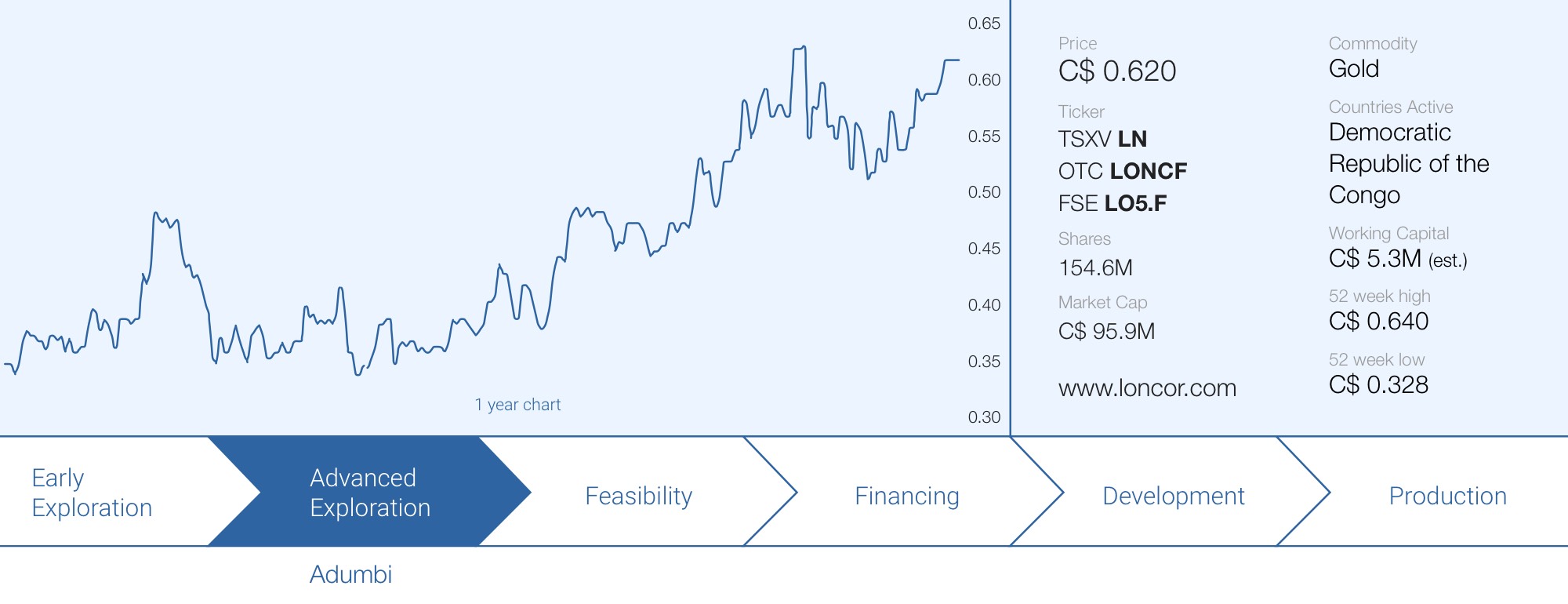
Although the gold price is now firmly trading in the vicinity of $3000/oz, most companies in the junior segment are still suffering. In the past few days and weeks we have seen some post-PDAC financings happen but in general, it’s still difficult for smaller gold companies to catch a bid.
Loncor Gold (LN.TO) is sitting on what we think is one of the best open pit projects available, but the company still has to deal with the negative perception related to ‘doing business in the DRC’. Although Barrick Gold (GOLD, ABX.TO), located just 220 kilometers away from Loncor’s Adumbi project, has been successfully operating in the DRC for quite a while now, the Africa-related stigma still plays a role.
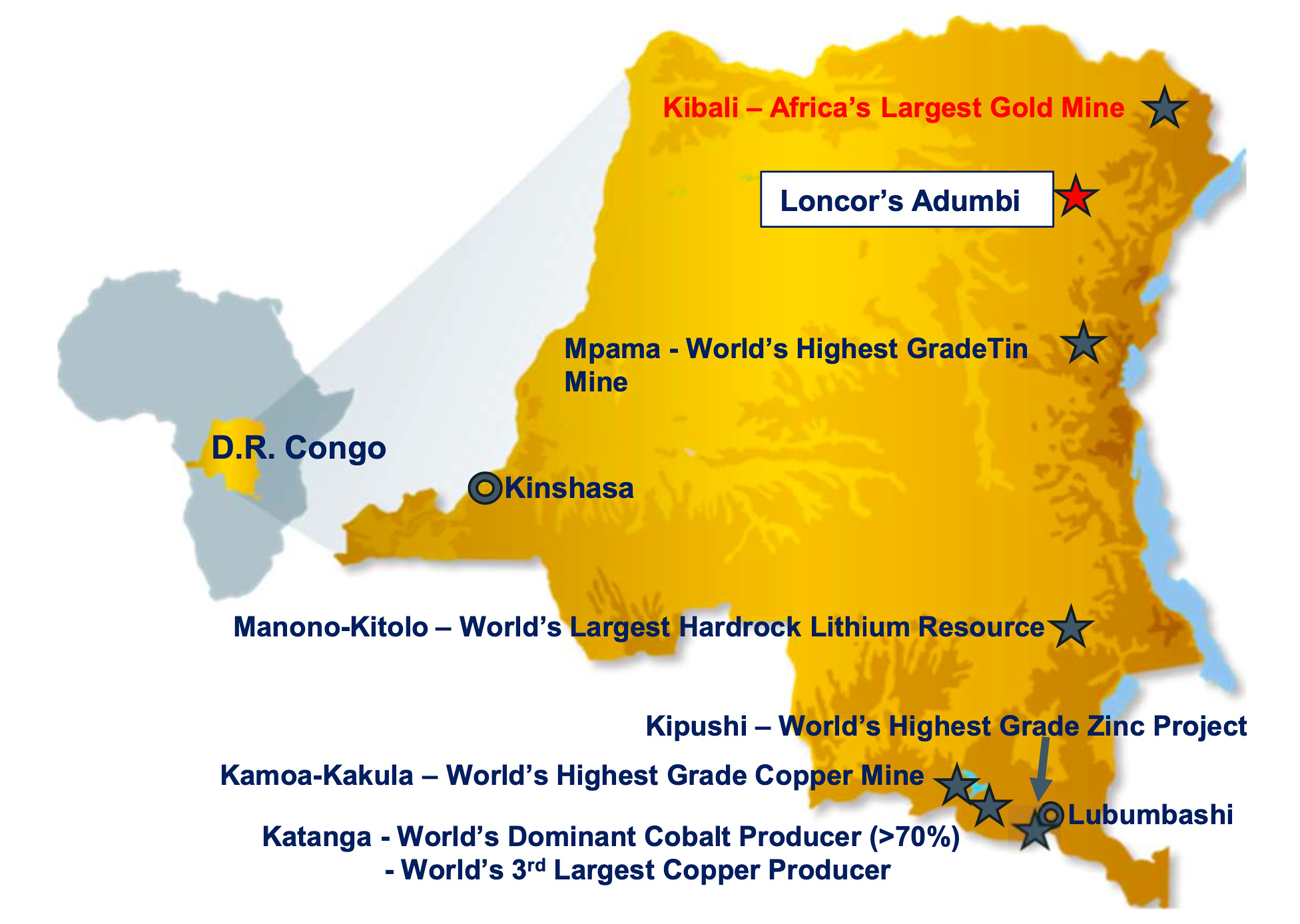
That being said, we noticed the (typical) swing in the attractiveness of mining jurisdictions. It looks like every decade some of the jurisdictions are making major moves, positioning themselves to be more or less attractive to investors. About 10 years ago, Mali was a preferred destination, but now their government has put the thumbscrews on the mining companies and hasn’t held back from throwing executives in prison until the demands are met.
The DRC is making the opposite direction. Just fifteen years ago, the central African country was a big question mark but it goes without saying the country has done a good job in putting itself back on the map. And although Chinese companies have easily and rapidly found their way back to the DRC, the level of interest from Western gold companies is still subdued. And that could work in Loncor’s favor: as the perception pendulum for the DRC swings in the other direction, Loncor’s flagship Adumbi project will be the most advanced asset not owned by a more senior company.
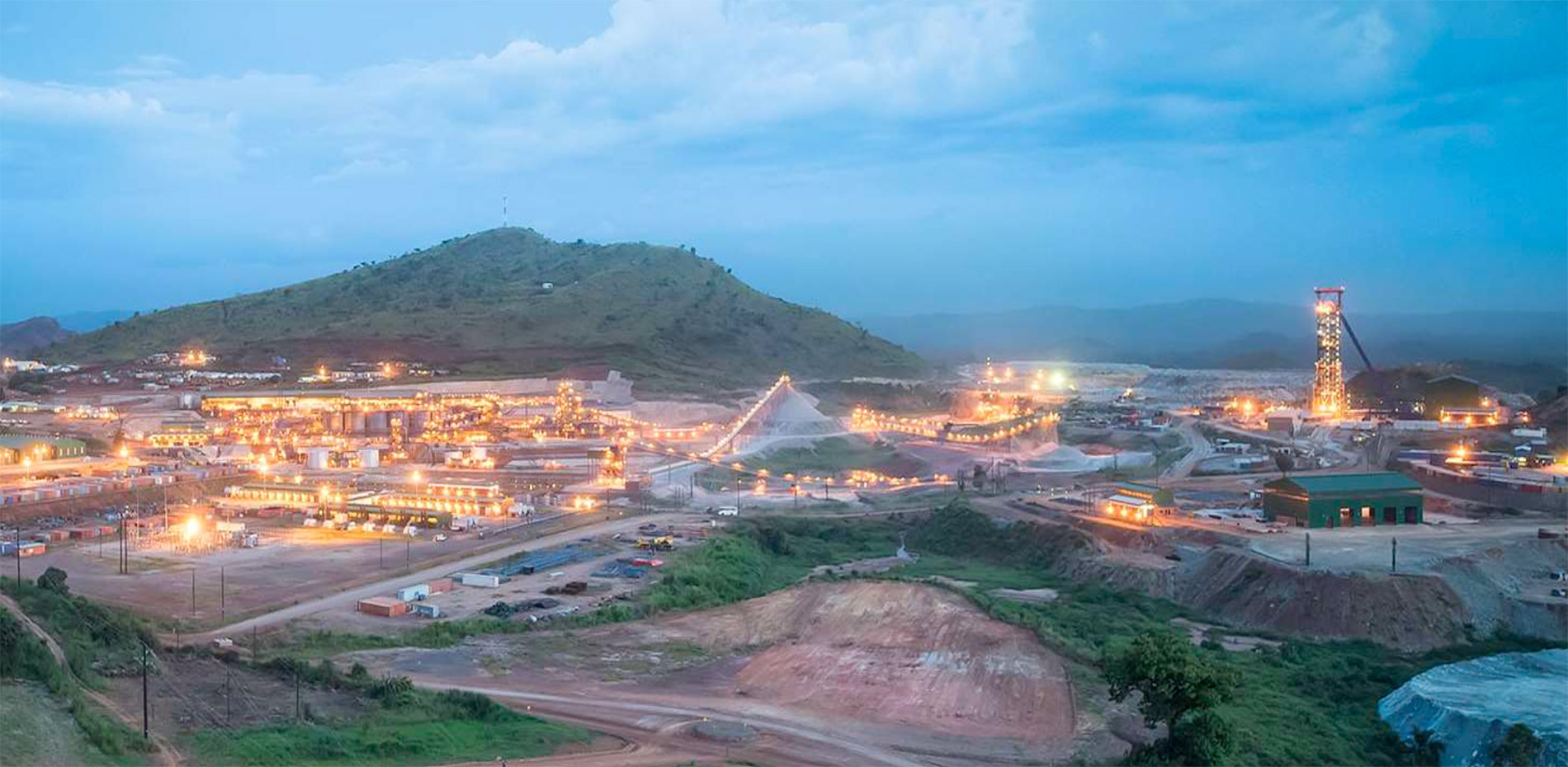
As a reminder, the Adumbi open pit currently contains almost 1.9 million ounces of gold in the indicated resource category with an additional 1.8 million ounces of gold in the inferred resource stage (with an additional 413,000 ounces of gold at Kitenge and Manzako, elsewhere on the license). The company also has a mining permit in place and the DRC Government already has its 10% free carried interest in the project.
The current drill program is focusing on defining the mineralization below the open pit as the pit size is limited by what’s technically feasible, not because the gold mineralization ends at the bottom of the pit. The current drill program will provide plenty of data to advance the underground zone towards a resource. Loncor currently has an exploration target of 8.9-9.6 million tonnes of rock at an average grade of 4.7-4.9 g/t gold. This represents 1.35-1.5 million ounces of gold which would push the total resource at Adumbi to over 5 million ounces across all categories in a combination of an open pit and underground resource. Other projects in the area have successfully traced mineralization up to depths of 1,000-1,500 meters so continuing to follow the mineralization at depth only makes sense.
The recent drill results confirm the strong gold values under the open pit
At the end of February, Loncor released very encouraging assay results from its deep drilling program on its flagship Adumbi deposit in the DRC. As you may remember, the company started to drill deeper holes to get a better idea of the mineralization underneath the current in-pit resource which currently hosts almost 1.9 million ounces of gold in the indicated resource category and 1.8 million ounces of gold in the inferred resource category.
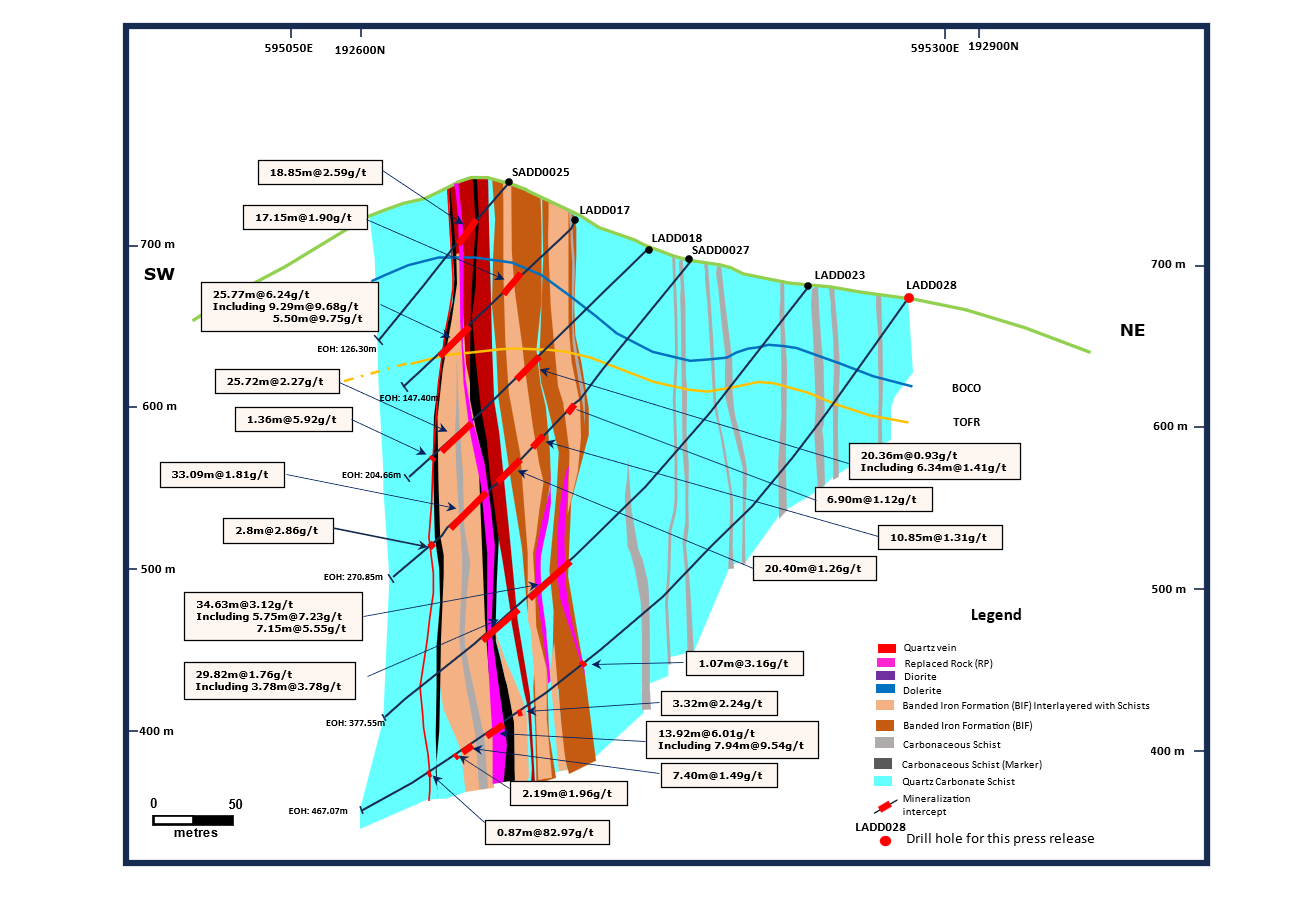
Loncor initially reported the assay results of just one hole (these are pretty deep holes so it takes a while to complete the hole and then wait for the lab to return the assay results) but that immediately was a good one as the drill bit intersected several high-grade mineralized zones. The zone that was encountered first returned almost 0.9 ounces of gold per tonne of rock over a 45 centimeter interval. Good grades, but pretty narrow (but it goes without saying even a few hundred tonnes of that grade would definitely boost the average grade of the rock that is processed through the mill. But further down-hole the drill bit intersected 2.6 meters of 4.06 g/t gold, and 11.85 meters of 7.14 g/t gold within a wider interval of 16.07 meters of 5.82 g/t gold. This was followed up on with almost 14 meters of 6.99 g/t gold within a wider interval of 22.64 meters containing 4.77 g/t gold. Towards the bottom of the hole, the drill bit intersected 2.07 meters of 4.25 g/t gold. The true width of the mineralized intervals is approximately 77% of the reported width.
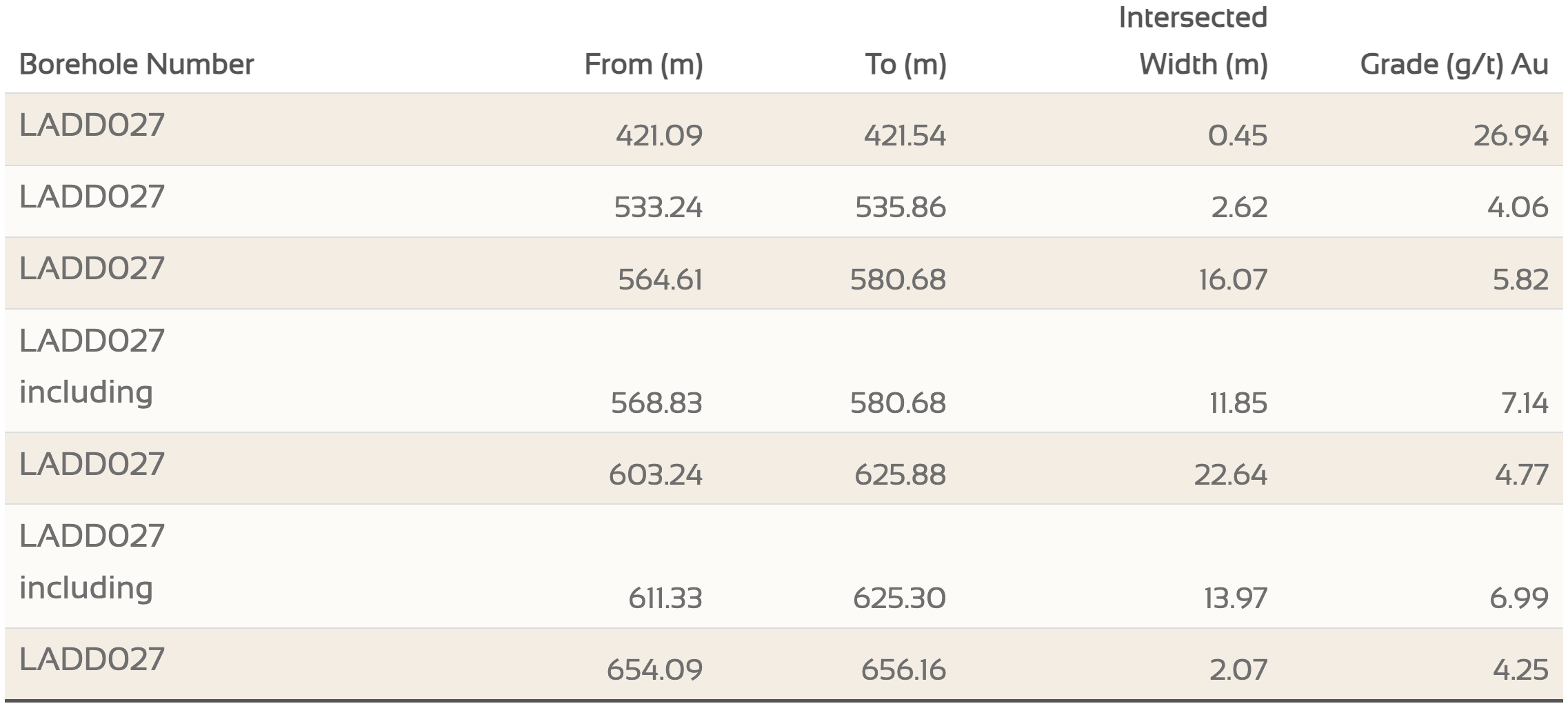
The grades are good and in a low-cost environment like the DRC they would for sure meet the cutoff grade for underground mineralization. Additionally, the Adumbi project will surely be developed as an initial open pit before going underground which means the initial capex related to the processing facilities should already be fully repaid by then.
That good hole was followed up on with the assay results from hole LADD028 (in the table shown below), this hole also encountered good grades over excellent widths. The 1.07 meters of 3.16 g/t gold and 3.32 meters of 2.24 g/t were just the first (relatively narrow) intervals before the drill bit hit 13.9 meters of 6.01 g/t gold including almost 8 meters of 9.54 g/t gold. And just a bit deeper, there were more mineralized intervals with 0.87 meters of 82.97 g/t gold towards the end of the hole. The latter interval will of course be capped in a resource model, but it shows how rich the system is.
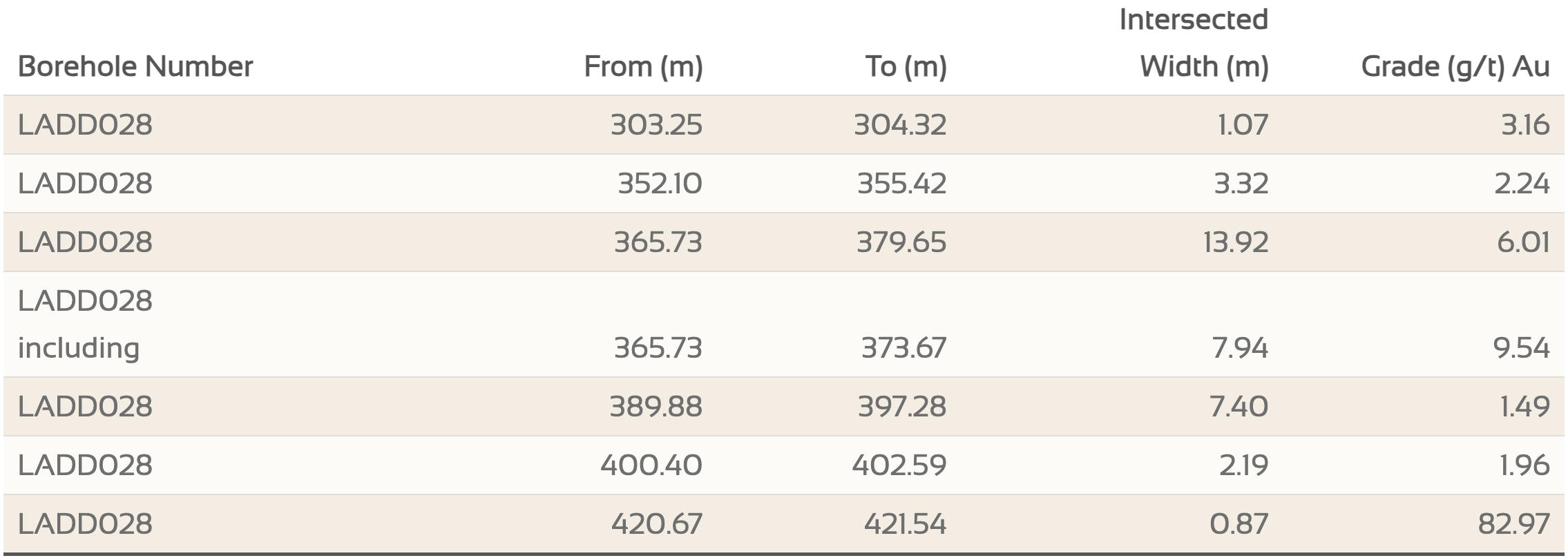
The true width of the mineralized intervals was approximately 81%. Looking at the location of hole LADD028, it was drilled within the pit shell and should be seen as an infill drill hole rather than an expansion hole. A rather successful infill hole that certainly further increases the confidence in the model.
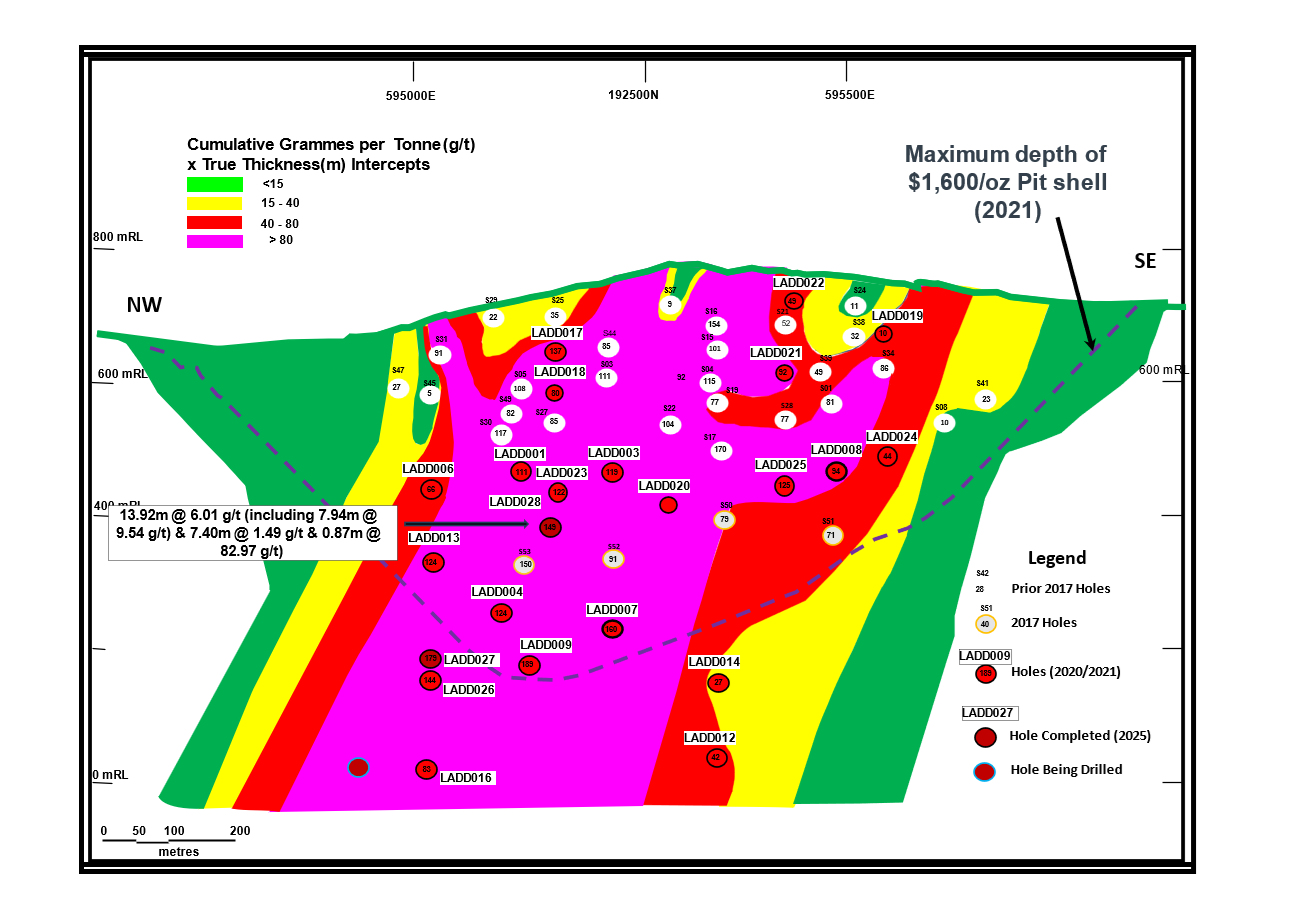
The next few holes to be released by the company will once again focus on the gold mineralization below the pit shell. Hole LADD029 is targeting a zone located approximately 600 meters down from surface, and the assay results from that hole will be important to determine how fast the company may reach the eyed resource expansion.









The cease-fire in the DRC should improve the perception
While we’d argue the not-so-great reputation of the mining sector in the DRC is one of the reasons that has held back Loncor’s share price, the recent unrest in the eastern part of the DRC hasn’t really helped either.
Rwanda-supported rebels invaded North Kivu, a province in the eastern part of the DRC and were even able to take Goma, an important economic center and hub for local mining operations. Although Loncor’s project is several hundred kilometers away from the epicenter of the fights, the unrest in the eastern part of the DRC obviously rubs off on all companies in the country.
After the international pressure on president Kagame of Rwanda continued to increase (the M23 rebels are actively supported by Rwanda) and as the latter likely wants to keep appearances up ahead of the UCI World Championship Cycling later this year, Qatar brokered peace talks between the DRC and Rwanda. President Trump will also likely claim he was instrumental in the positive developments having sent his own personal envoy (Ronny Jackson) to broker a cessation of hostilities, and a mineral deal. In addition, President Trump has appointed his son-in-law’s father, Massad Boulos, as his personal envoy to the DRC to negotiate strategic metal deals.
The cease-fire agreement was a surprise move after the M23 rebels pulled out of peace talks with the DRC government just days before, and both heads of state agreed to a cease-fire in North Kivu.
Although this should not have a direct impact on Loncor Gold as the company continues to operate and drill with no issues, it should help the perception of doing business in the DRC. The perception of the DRC mining sector could further be improved if an expected USA-DRC collaboration will actually come to fruition. Not only will this lend even more credibility to the DRC as a mining nation, it should also improve the security and safety situation in the country.







Conclusion
Loncor is taking all the right steps to increase and improve the valuation of its 84.68% owned Imbo project, of which the Adumbi prospect is of course by far the most important part. The first deeper hole that drill-tested the area below the pit shell was successful while a second (infill) drill hole also confirmed the wide-spread presence of gold that exceeds the cutoff grade of 0.57-0.63 g/t that was used in the 2021 resource calculation (the current gold price is also substantially higher so it should be realistic to see slightly lower cutoff grades as well). News from the ongoing drilling is likely to continue to draw positive attention to Loncor over the next few months.
Now the recently brokered peace agreement for the Eastern portion of the DRC should reduce the negative perception of the area, Loncor can focus on further increasing its consolidated resources to 5 million ounces of gold (across all categories and in a combination of open pit and underground) in the next resource update.
Disclosure: The author has a long position in Loncor Gold. Loncor Gold is a sponsor of the website. Please read the disclaimer.
